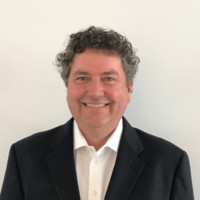- Video Library
- TibaRay | Jeff Amacker, CEO
TibaRay | Jeff Amacker, CEO

Jeff Amacker
Jeff is a successful general manager who retired from Varian Medical Systems after 28 years to start his own financial planning business. After successfully growing the business for four years, he sold it so he could lead a Radiation Oncology startup: TibaRay, Inc. His 17 years of engineering experience and 17 years of successful business management have given him a unique understanding of both the technology and the business of Radiation Oncology capital equipment.
Jeff Amacker
Jeff is a successful general manager who retired from Varian Medical Systems after 28 years to start his own financial planning business. After successfully growing the business for four years, he sold it so he could lead a Radiation Oncology startup: TibaRay, Inc. His 17 years of engineering experience and 17 years of successful business management have given him a unique understanding of both the technology and the business of Radiation Oncology capital equipment.

17011 Beach Blvd, Suite 500 Huntington Beach, CA 92647
714-847-3540© 2025 Life Science Intelligence, Inc., All Rights Reserved. | Privacy Policy







